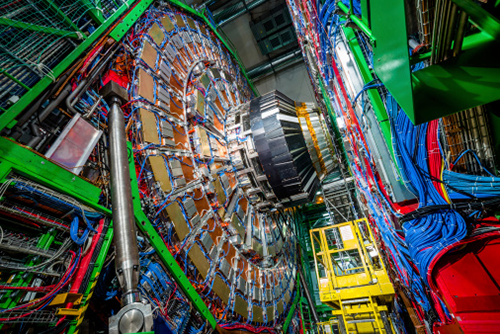AMD EPYC™ CPUs Articles
- September 21, 2022
- Author: David Strom
Lodestar is a complete management suite for developing artificial intelligence-based computer vision models from video data. It can handle the navigation and curation of a native video stream without any preparation. Lodestar annotates and labels video, and using artificial intelligence, creates searchable, structured data.
- September 15, 2022
- Author: David Strom
CERN is trying to discover what happened in the nanoseconds following the Big Bang that created all matter. It is manipulating data flows with custom AMD circuitry that slices up the Large Hadron Collider data into smaller pieces. “You need to get all the data pieces together in a single location because only then can you do a meaningful calculation on this stuff,” said Niko Neufeld, a CERN project leader. The effort entails rapid data processing, high-bandwidth access to lots of memory and very speedy I/O among many servers.
- September 1, 2022
- Author: David Strom
Blur Studio calculated it could replace a competitor's 500-node server farm with just 56 Supermicro A+ servers equipped with AMD EPYC™ CPUs, getting equivalent processing power.
- August 29, 2022
- Author: David Strom
- August 25, 2022
- Author: David Strom
Building the next generation of technical computing equipment has become easier, thanks to the combination of International Computer Concepts’ (ICC) hardware and Define Tech Ltd.’s software and firmware. The result marks a new direction for this market segment, offering a more flexible and useful approach, because it comes with software and applications for running complex engineering simulations.
- August 18, 2022
- Author: David Strom
In South Africa, the Queensland Education Foundation supports 11 different schools for the first 12 primary grades. In an effort to transform the region into a marquee digital environment, it has built a series of fully networked and online classrooms. The network is used both to supply connectivity and as a pedagogical tool to teach students enterprise IT concepts and provide hands-on instruction.
- August 18, 2022
- Author: David Strom
The Lawrence Livermore National Lababoratory chose to use a cluster of 120 servers running AMD EPYC™ processors with nearly 1,000 AMD Instinct™ GPU accelerators. The hardware, facilitated by Supermicro, was an excellent match for the molecular dynamics simulations required for the Lab's cutting-edge research, which combines machine learning with structural biology concepts.
- ‹ previous
- 12 of 12








